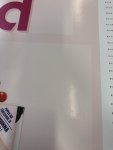Johannes
Member
Hi!
At the LFP company I work at we have the rendering intent in the RIP set to different settings for CMYK Images(perceptual bpc) and CMYK Vector (relative colorimetric bpc).
Usually everything runs fine but at a few occasions I got a specific problem with PDF’s. You can’t see it until the file is in the rip and it’s been renderd. Squares appears around text and objects. And change the background color around the objects.
I know that it’s because of the different settings in the rendering and the original PDF sent to us are somehow created or saved in the wrong way. But is there any way to discover this problem before you got the file in the rip? What should we tell the customer to do not to have it happening again?
At the LFP company I work at we have the rendering intent in the RIP set to different settings for CMYK Images(perceptual bpc) and CMYK Vector (relative colorimetric bpc).
Usually everything runs fine but at a few occasions I got a specific problem with PDF’s. You can’t see it until the file is in the rip and it’s been renderd. Squares appears around text and objects. And change the background color around the objects.
I know that it’s because of the different settings in the rendering and the original PDF sent to us are somehow created or saved in the wrong way. But is there any way to discover this problem before you got the file in the rip? What should we tell the customer to do not to have it happening again?












